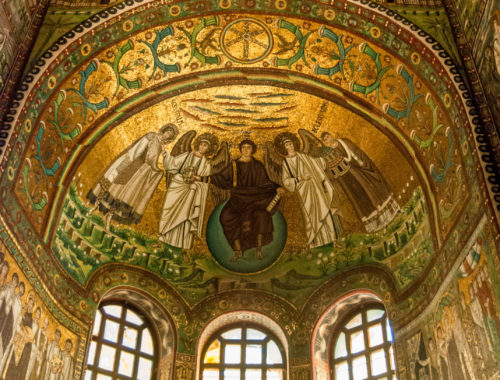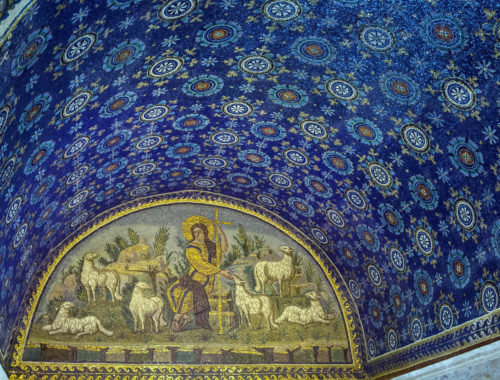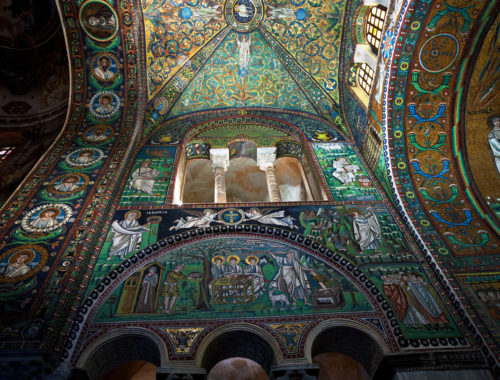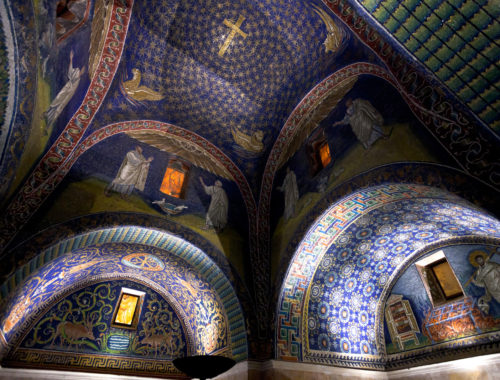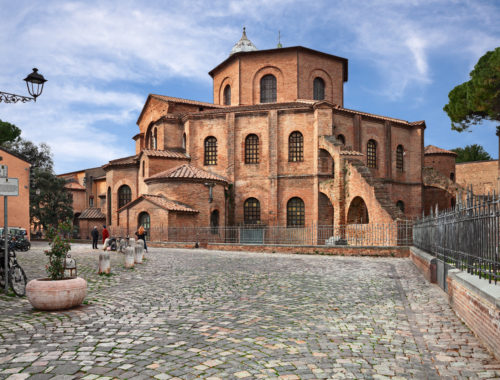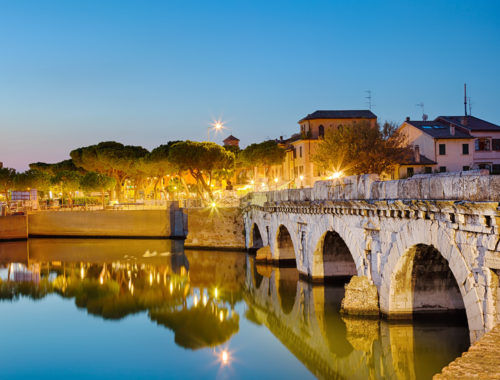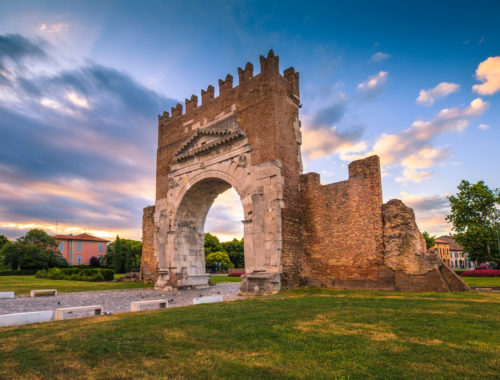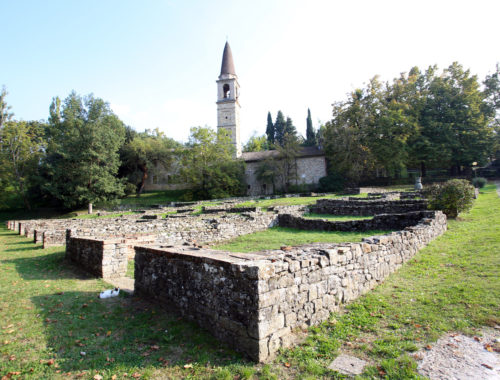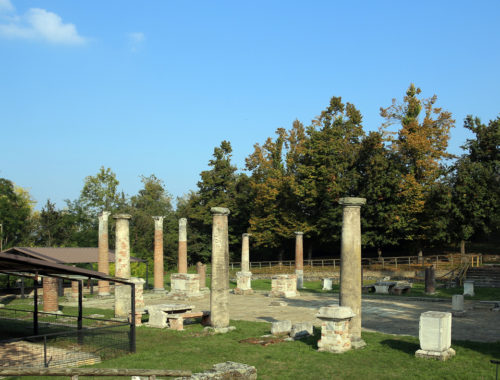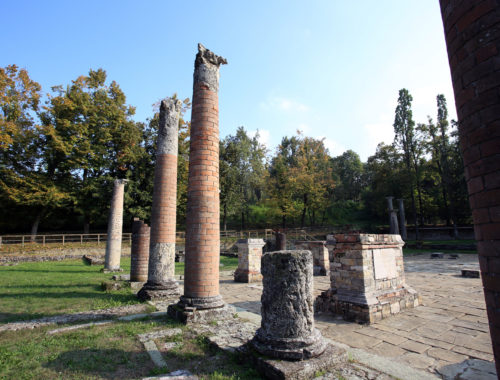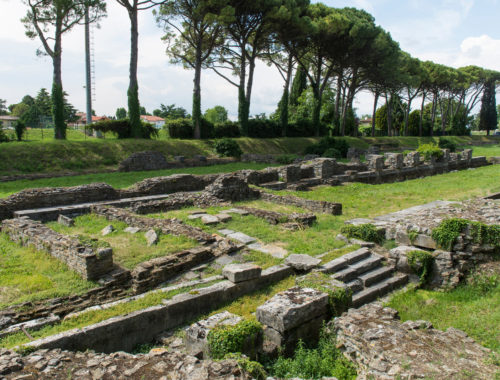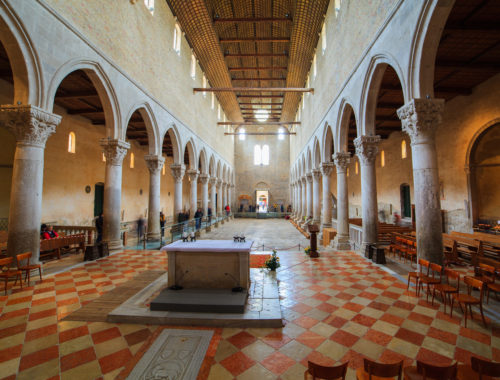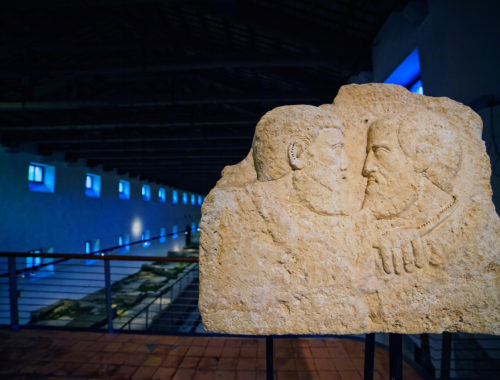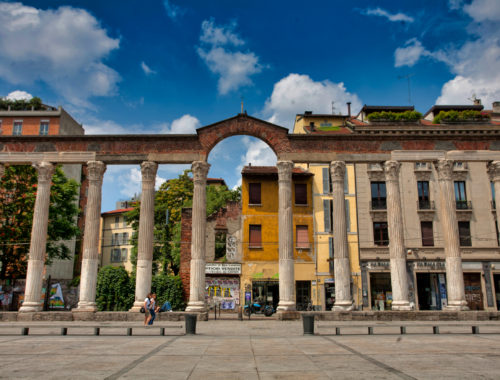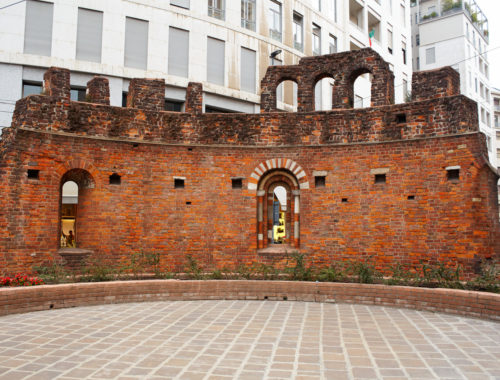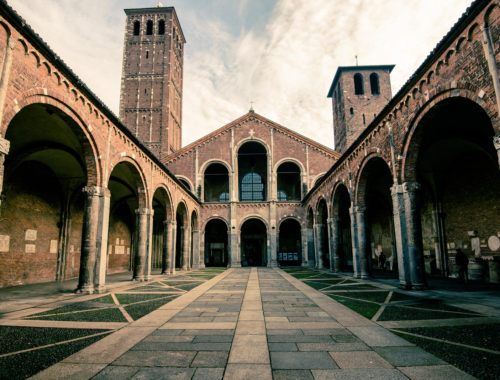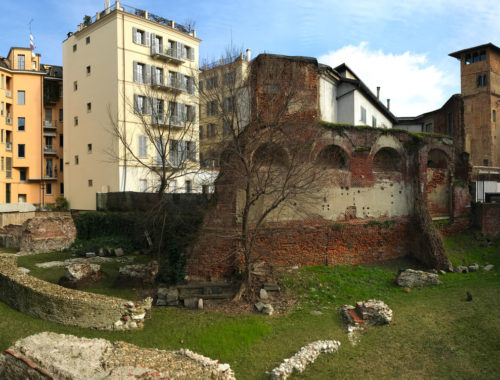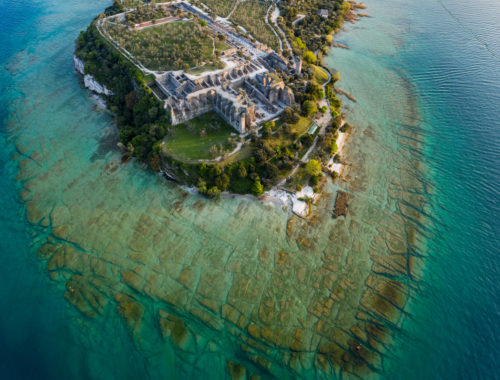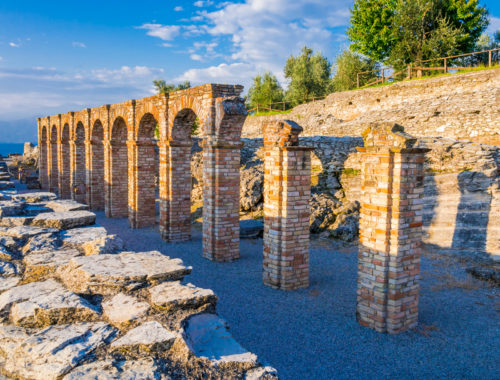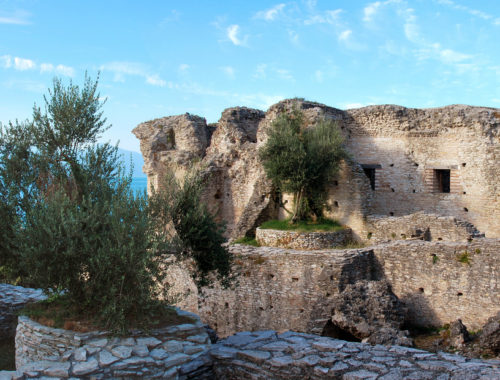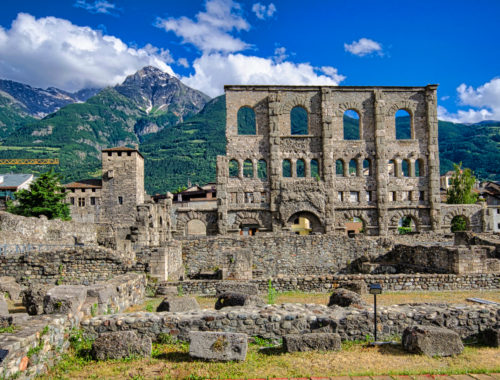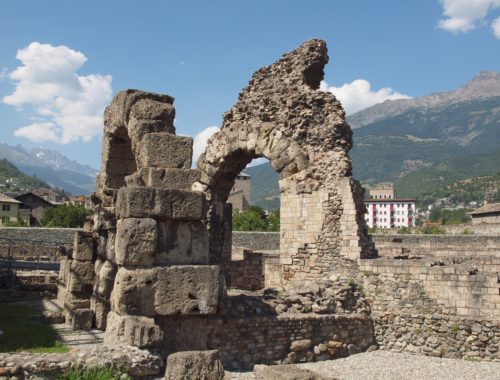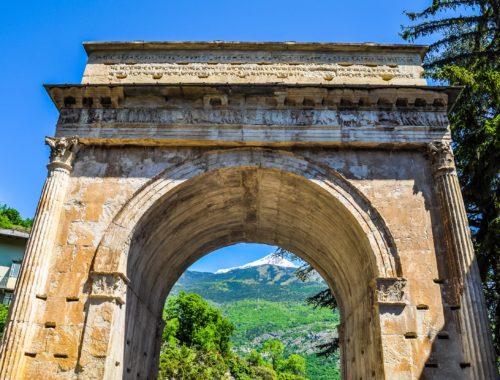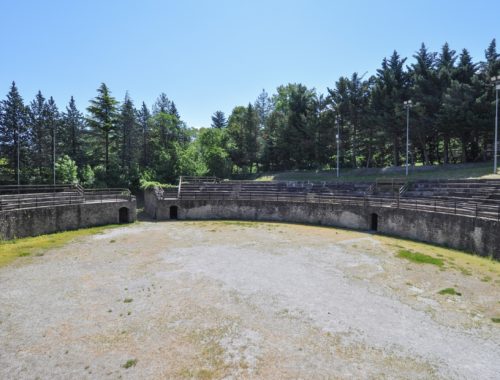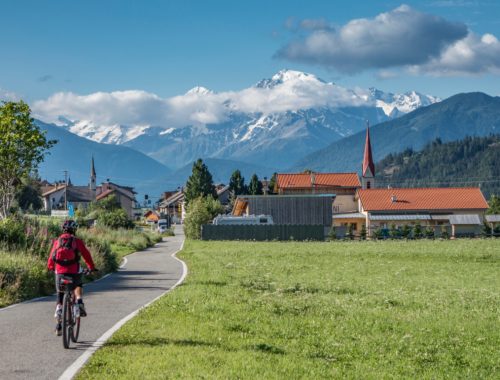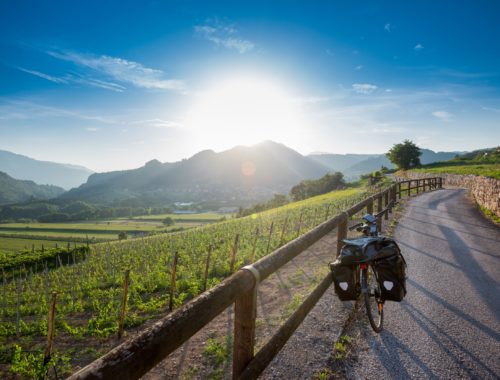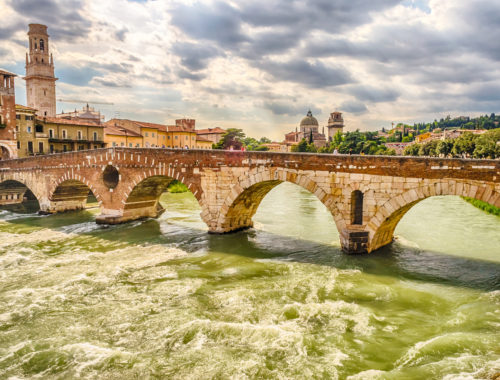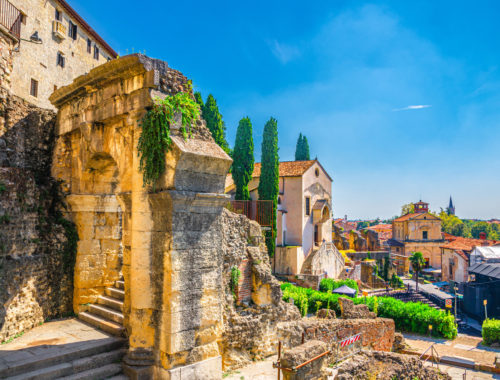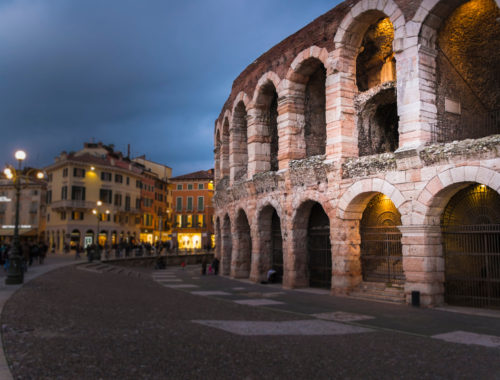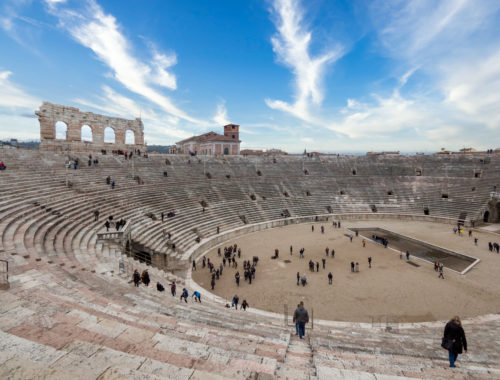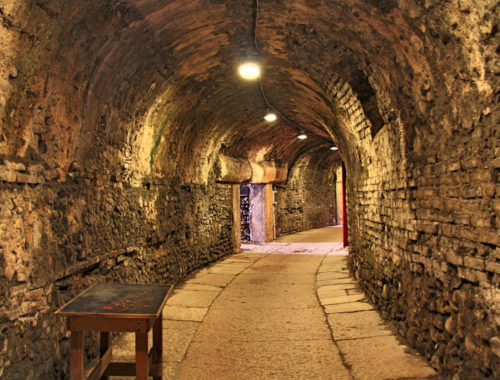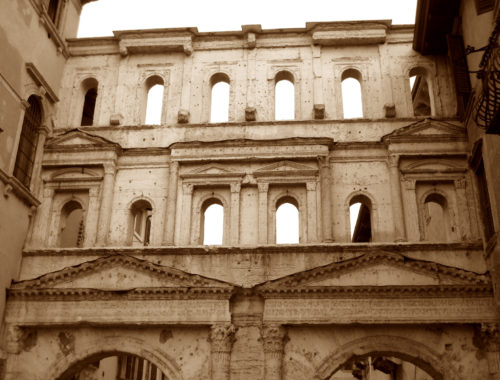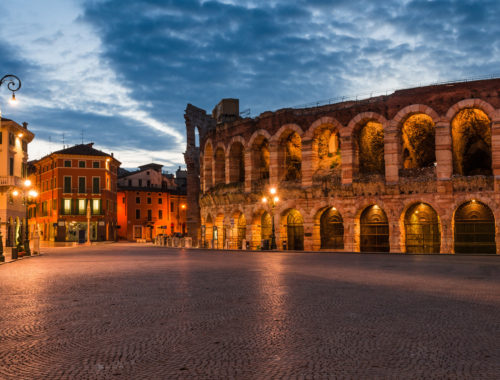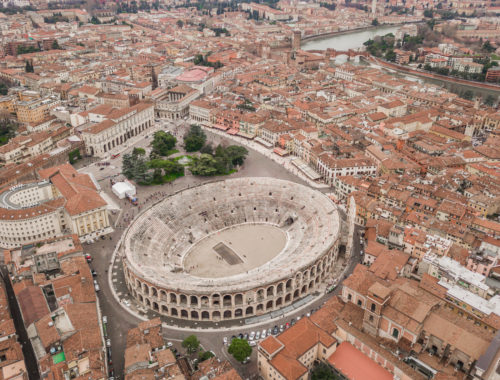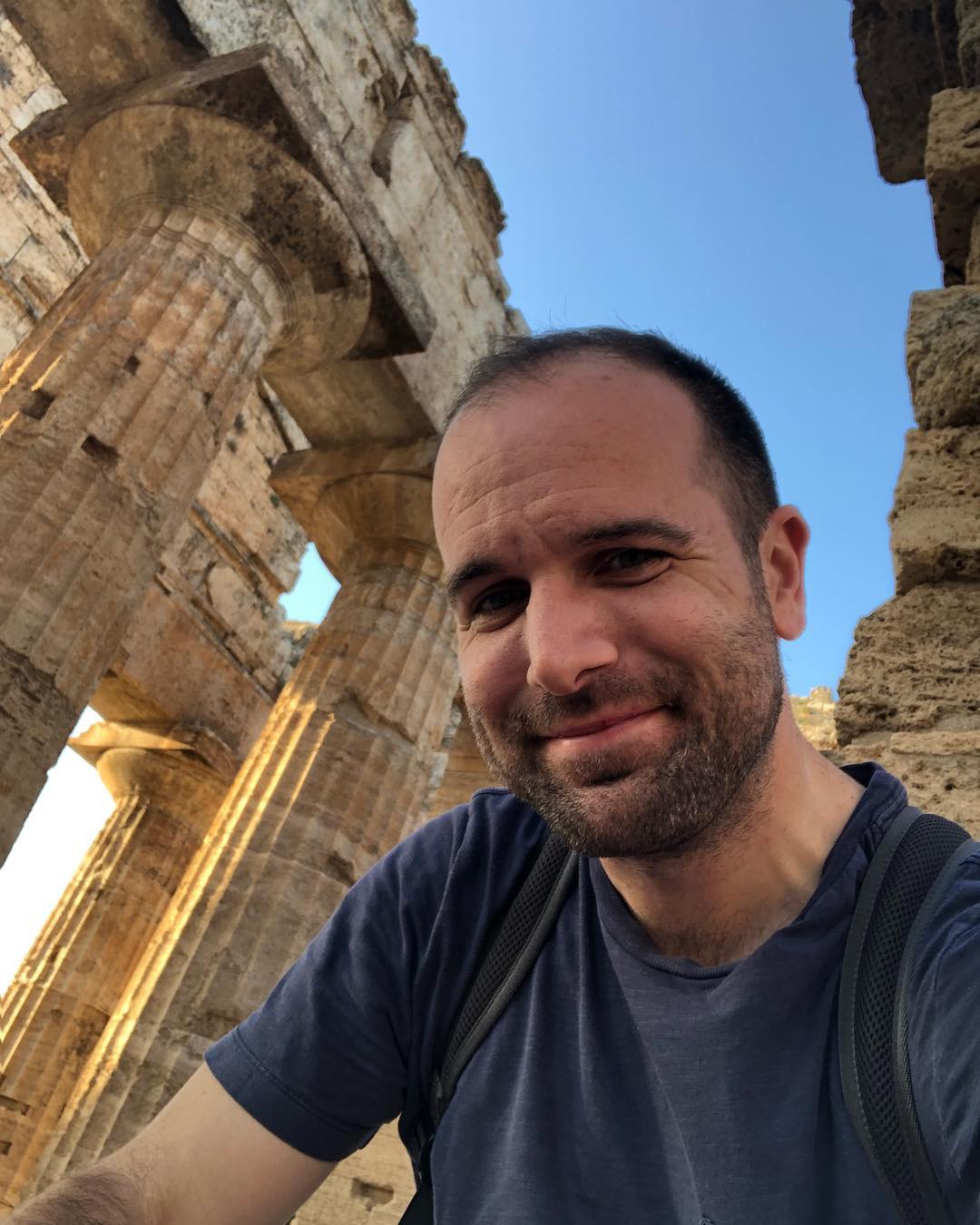Italy North
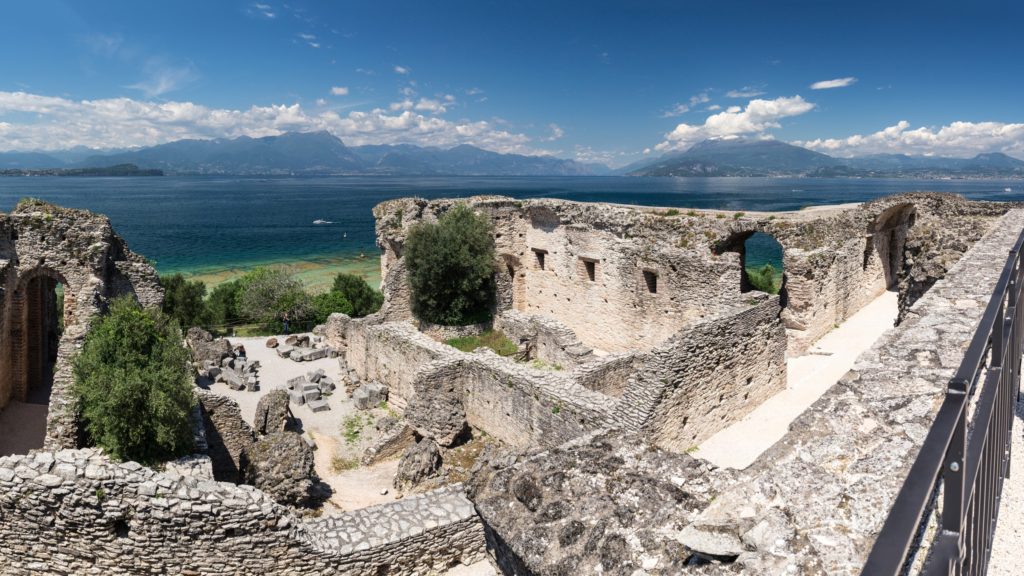
“Cisalpine Gaul”
Known in ancient times as “Cisalpine Gaul” (literally, “Gaul on the near side of the Alps”), the plain of the Po River valley was not technically considered a part of Italy for several centuries even after it came under Roman control.
As the name suggests, it was originally inhabited by the Gallic (Celtic) peoples who had crossed the Alps from their homeland in what is now Southern Germany. They were divided into several tribes, most notably the Ligurians (hence Liguria), the Venetii (Veneto), the Boii, and the Insubres among them. Many cities, such as Venice and Turin, still retain place names derived from these Celtic tribes.
Cisalpine Gaul came under Roman rule after the First Punic War with Carthage. After Hannibal’s invasion, they rose up in rebellion, being the first place he came to after crossing the Alps. When Hannibal was defeated, the Romans gave the Celtic people very little quarter and retaliated brutally. They also began a massive colonization effort to replace the peoples of Cisalpine Gaul with Italians.
This apparently worked, as several centuries later, during the time of Augustus Caesar, the province was abolished and merged into Italia proper. All of the people were also made Roman citizens. Thereafterwards, Northern Italia was extremely prosperous, especially it’s largest cities: Mediolanum (Milan), Ravenna, and Aquileia. Today, the region is modern Italy’s wealthiest.
Emilia-Romagna & Liguria
Ventimiglia (Albintimilium)
Albintimilium lies right over the border from France on the Italian Riviera, in the city of Ventimiglia.
Originally a city of the Celtic Ligurian tribe Intemeli, the city was attempting to stave off the advances of Marseille (then Massilia) by asking the Romans for aid. The Romans brought the town into the Republic in the second century BCE. It lay along the main route of the Via Julia Augusta, which connected Italy with Gallia Narbonensis.
The archaeological park of Nervia showcases the main structures left:
- The theater, which could accommodate up to 2000 spectators.
- The baths
- Remains of the Via Julia Augusta road
Opening hours and tickets can be found here.
Ventimiglia itself lies at the intersection of three major train routes, so it is possible to arrive that way either from inside Italy or from the Marseille line in France.
Ravenna
One of the great jewels of Italy, Ravenna’s antique heritage is at great as any of the other major sites of the country. Holding sway as the final capitol of the Western Roman Empire, it hosted figures such as Galla Placidia, Aetius, and Romulus Augustulus, the final Western Emperor. The value of it’s historic lineage is found mostly in Late Antiquity, after the west was lost and the Eastern Roman Empire, headquartered in Constantinople, recaptured the territory. The glittering mosaics and beautiful churches are a testament to this period.
Although it’s origins aren’t exactly known, the city developed as the nearby Venice would centuries later: as houses built on pylons on a series of small islands in a lagoon. The Romans found it so unimportant, that they bypassed it in their conquest of the Po River delta, until giving it federated town in 89 BCE. It was here in 49 BCE where Julius Caesar gathered his forces before crossing the Rubicon.
Augustus later founded the military harbor of Classis. In 402 CE, the Western Emperor Honorius transferred the capital of the Western Empire from Milan to Ravenna, since Ravenna was protected by the surrounding swamps and marshes.
In 476 CE, the last Roman emperor of the West, Romulus Augustulus, was deposed by Odoacer, who claimed to be continuing Roman rule in the name of the Eastern Emperor. Theodoric later went to seize Ravenna (and Italy) from Odoacer, thereby creating the Ostrogothic Kingdom of Italy. Later, the Eastern Emperor Justinian’s forces conquered the city and tied Ravenna to Constantinople in what is known as the Exarchate of Ravenna. Ravenna would eventually be conquered by the Lombards, permanently severing it from Constantinople.
(Of later note, Dante Alighieri is buried here in the Basilica of San Francesco.)
Ravenna’s biggest claims to fame are the mosaics and they are incredible!
Eight early Christian monuments in Ravenna are inscribed on the World Heritage List:
- Orthodox Baptistry also called Baptistry of Neon (c. 430)
- Mausoleum of Galla Placidia (c. 430)
- Arian Baptistry (c. 500)
- Archiepiscopal Chapel (c. 500)
- Basilica of Sant’Apollinare Nuovo (c. 500)
- Mausoleum of Theodoric (520)
- Basilica of San Vitale (548)
- Basilica of Sant’Apollinare in Classe (549)
Along with these, are other remains, including the church of San Giovanni Evangelista, erected by Galla Placidia, from the early 5th century.
Martha’s Italy has a short overview of the city and the above monuments.
Here is UNESCO’s site for the Early Christian Monuments of Ravenna.
European Traveler has a great site dedicated to Ravenna. Literally everything you would want to know about the city you can find there, but tickets and sightseeing tips can be found on this page.
Rimini
Most of Rimini’s ancient ruins can be found along the Via Roma/Via Bastioni Orientali/Via Circonvallazione Occidentale/Via Bastioni Settentrionali square area. It’s a one hour train or car ride from Ravenna.
Originally an Estrucan-Celtic settlement, it was taken by the Romans in 268 BCE as the colonia of Ariminum. Caesar’s legendary appeal to his legions to follow him to Rome was made in Rimini in 49 BCE. The city was the terminus of the Via Flaminia, which connected Rome to the northern Cisalpine Gaul and it connected with the Via Aemilia that led northwards into the Po River region.
The Tiberius Bridge: a still complete Roman bridge from the year 14 CE! It’s still used by people as a pedestrian bridge to this day. Built with Istrian marble. Extraordinarly.
The Arch of Augustus: Dating from 27 BCE, it is the oldest surviving Roman triumphal arch left. Built by Augustus to mark the Pax Romana and the start of the Via Flaminia south to Rome.
Domus Del Chirurgo: Built in the 2nd century CE, this building belonged to a surgeon. You can walk over a glass walkway to see incredible mosaics, well-preserved.
Rimini Amphitheater: Though not as great as it once was, the amphitheater still plays host to Roman re-enactment scenes in the summer.
Montanara Gate: Built in the 1st century BCE, it was the main entry point to the city from the south.
Arimini Caput Viarum: A new multimedia visitor center dedicated to showcasing Rimini’s Roman past. Here’s their website. It’s got some amazing stuff to get you prepped to go including a recreation of what the city used to look like.
I found this nifty little app GPSmyCity that gives you a full walking tour of the city and it’s monuments. It covers way more than what I’m talking about, but who doesn’t love walking around Italian cities?
Veleia
Located in the beautiful hills of Emilia-Romagna, about two hours from Bologna or an hour and a half from Milan. You’re going to have to drive to this one.
Little is known of the town’s history, other than a passing mention by Pliny the Elder. The tabula alimentaria, the largest bronze tablet from Antiquity, was found here in 1747, containing the list of estates of Velaia and some neighboring towns.
- Forum
- Basilica
- Thermae
- Amphitheater
These are mostly the foundations, though there are some columns still left standing.
Emilia Romagna Tourism has a small site dedicated to it. Apparently they have a festival at various times of the year.
Friulia-Venezia Giulia
Aquileia
One of the largest and most prosperous cities within Roman Italia and the Empire, Aquileia flourished until it was sacked by Attila the Hun during the barbarian invasions of the 5th century CE. Founded as a Roman military outpost in 181 BCE, it’s location at the entrance to Roman Italy from the Balkan provinces ensured it’s wealth AND that it was the first city attacked when Italia was invaded. The people who fled this city to the islands of the nearby lagoons eventually helped to found Venice.
Unfortunately, not as much survives as probably should, but there are still many sites throughout the city. The main area at the heart of the city is designated as a UNESCO World Heritage Site known as the Archaeological Area and the Patriarchal Basilica of Aquileia.
Patriarchal Basilica, while the structure today is from 1031 (nothing to sneeze at there!) the building was built on top of an older basilica dating from the 4th century CE. The incredible mosaics on the floor date from this period, when Roman religious art shows the Empire’s shift to Christianity.
The Archaeological Area, which contains the remains of the Roman Forum and other buildings. A terrific description of the site can be found here.
The Archaeological Museum contains much of the surviving artwork of the city. More information can be found at the World Heritage Site website.
Take a look below at a beautiful reconstruction of the city.
You can take the rail line from Venice. You can get off at the Cervignano-Aquileia-Grado station and then take bus 400 to Aquileia.
Trieste
The northeasternmost part of Italy, near the border with Slovenia.
Originally a settlement of Illyria, the Veneti people occupied it around the 9th century BCE. The original Venetic name was Tergeste, meaning market city. It was incorporated into the Roman Republic in 177 BCE during the Second Istrian War. It was eventually promoted to a colonia and the city flourished due to its position on the road to Aquileia from Istria, before later being incorporated into Italia proper. It submitted to the Eastern Empire when the Western one fell in 476, but it was taken by the Franks in 788 CE.
All of these sites are within a few minutes walk of each other.
Lombardy
Bergamo
In the foothills of the Alps, about an hour northeast of Milan.
Like much of Northern Italy, it was originally a Celtic settlement. Roman military was certainly present in the last 3rd century BCE. Julius Caesar granted the city municipium status in 49 BCE.
A great deal of the ruins are located underground or in protected areas. While I would love to give more information, having not been there, I will refer you to the city’s website, which actually gives you a map guide to all of the Roman structures to be found in the city. I wish more cities would do this!
The Citta Alta (Upper Town) is where you want to head as it is the oldest part of the city. The website linked above and the Google Maps link in Locations will get you there!
Brescia
Northern Italy in the Lombardy region, close to Lake Garda.
The remains are of the city center of Brixia, founded by the Cenomani Gauls of Cisalpine Gaul. The city was taken by the Romans in 225 BCE, to whom it remained surprisingly faithful despite it’s Gallic origin. Its inhabitants received Roman citizenship in 41 BCE, almost two hundred(!) years later. Like much of Northern Italy, the city was sacked by the Huns, Visigoths, and Ostrogoths.
- The Capitolium (pictured above)
- Forum
- Theater
- Lapidarium
Brescia can be reached by any major train, mostly within an hour or two of other major population centers. It is a twenty minute walk from the train station to the ruins.
- Full price € 8,00
- Reductions € 6,00 (groups max 25 and conventions)
- Reductions € 4,50 (from 14 to 18 years and over 65, students of university/school of fine arts)
- Reductions € 3,00 (school and from 6 to 13 years)
- Family (1 child) € 15
- Family (2 children) € 18
- Family (3 children and over) € 21
- Full price € 15
- Reductions € 12 (groups max 25 and conventions)
- Reductions € 10 (from 14 to 18 years and over 65, students of university/school of fine arts)
- Reductions € 6 (school, children from 6 to 13 years)
Open from:
- Tuesday to Friday, 9am to 5pm
- Saturday and Sunday, 10am to 6pm
Links
Milan
While Milan is extremely well known, the actual location of the ruins you can find in it isn’t. Use this map location for the most centrally located, starting with the Colonne di San Lorenzo (pictured above).
Milan is the second largest city in Italy, but it has been an important city for millennia, when it was originally known as Mediolanum. Founded around 390 BCE by the Celtic Insubres tribe. It was conquered by the Romans in 222 BCE. It was known for it’s schools during the Roman era. During Diocletian’s reign, he divided the empire in half, with the political capital of the Western Empire moved from Rome to Mediolanum.
The edict issued by Constantine in 313 CE granted religious tolerance to all religions in the Empire, thereby making way for Christianity’s eventual dominance by the end of the century. After it was besieged by the Goths in 402 CE, the Western Empire’s capital was moved to it’s final city, Ravenna.
For such a major city, Milan does not betray it’s Roman past easily. There are many more than people would realize, but the city’s fashionable “modern” aura means that many tourists might not see it as a destination, aside from the famous Duomo. But if you’re willing to wander around, you’ll find some jewels.
- The basilica of S. Ambrogio, which contains
- Late Antique mosaics
- The tomb of Stilicho
- Inscriptions
- Colonne di San Lorenzo (pictured above), which is front of the church of San Lorenzo
- The remains of the amphitheatre
- A tower from the circus, now inside the Convento di San Maurizio Maggiore
- Crypt of San Giovanni in Conca
- Baths of Hercules
WantedinMilan has a great overview of the sites and the address of each.
Sirmione (The Grottoes of Catullus)
At the very end of the Sirmione peninsula on Lake Garda.
The poet Catullus may or may not have lived here. The name was given to this 1st century Roman villa because Catullus mentioned his return to his villa in Sirmione in one of his lyric poems. It is one of the most exceptional finds in Northern Italy.
Italy magazine has a nice description of the site.
Atlas Obscura goes in depth about the site and also provides directions on how to get there and what the costs are.
Piedmont & the Valle d'Aosta
Aosta
In the eponymous Valle d’Aosta region a large valley within the Italian Alps.
The remains of Roman colonia of Augusta Praetoria Salassorum. It was the center of the Salassi people, before their subjugation by the Romans in 25 BCE, during the reign of Augustus. It is he for whom the city and region are named, transliterated as Aosta. It was a strategically important site during the entire Roman Empire. During the Middle Ages, the Via Francigena, one of the most important medieval pilgrimage routes, went through the city and the remains of it still do to this day.
The ancient walls are still preserved almost in their entirety as is the ancient theater, pictured above. The Forum Cryptoporticus, Arch of Augustus, and the Roman Bridge (Ponte Romano Aosta) are also found nearby.
Also, go hiking in the Alps! Seriously, spend a few hours here and then head up the valley and soak up one of the most beautiful mountain ranges on Earth.
Lying as it does within one of the major Alpine valleys, on the road from Italy to France through the Alps, and near Mont Blanc, the city is unavoidable if making the trip from Chamonix to Milan or Turin. As with most of Northern Italy, the train is the easiest way to get here.
The bridge, walls, and arch are free. There is an entrance fee to the theater and cryptoporticus, with access to a regional archaeological museum. This is all for 7 euro with standard reduced fees for students and those under 18.
April to September:
daily from 9 a.m. to 7 p.m.
October to March:
daily from 10 a.m. to 1 p.m. and 2 p.m. to 5 p.m.
Links
Turin
An easy two hours southwest of Milan.
The largest city and capital of Piedmont, Turin was the first capital of a united Italy from 1861 to 1865. It’s ancient origins stretch back much farther, however.
The city’s name comes from the Taurini, a Celto-Ligurian people attacked by Hannibal during the Second Punic War after he made his showstopping entrance to Italy over the Alps.
A Roman colonia had been established here by 28 BCE, known as Julia Augusta Taurinorum. Now one of the city’s main pedestrian streets, Via Garibaldi traces the city’s decumanus. The town probably only reached a population of 5,000. Like much of Northern Italy, Turin was probably settled by people from central and southern Italy, as the Romans initiated a colonization program to outnumber the original Celtic inhabitants. It was eventually conquered by the Heruli and Ostrogoths before being taken by the Lombards. and finally Charlemagne.
Much like Milan, Turin’s more recent architecture tends to overshadow the ancient. The major ancient sites are both located in the city’s archaeological park:
Porta Palatina (pictured above) was the main gate for the northern part of the ancient city. It is one of the most complete Roman city gates in the world.
As with a lot of Northern Italy, the regular train service gets you to the beautiful train station of Turin (Porta Nuova), which is only a short 20 minute walk from the park.
Susa
In the Susa Valley, directly west of Turin near the French border.
Originally founded by the Gauls, it was made into a Roman city in the late 1st century BCE.
- The triumphal arch of Augustus
- Ampitheater
Take the train from Turin to Susa. Follow these instructions to the arch of Augustus. The ampitheater is nearby.
Trentino-Alto Adige
Via Claudia Augusta
The Via Claudia Augusta runs from the area around Venice to Augsburg, Germany, passing through Austria along the way. I will only be discussing the Italian part in this post.
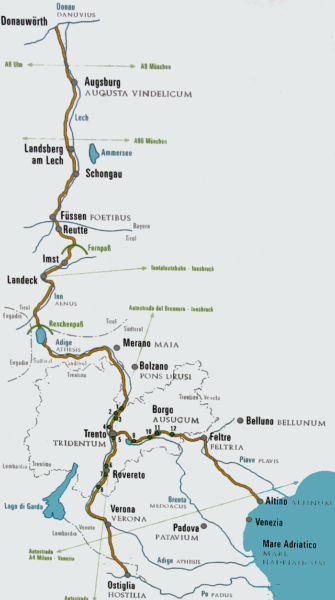
Begun by Nero Drusus in 15 BCE, and completed by his son, the emperor Claudius, in 46-47 CE. Meant to the first major Roman road crossing the Alps to the Danube valley. It’s original use, as many early Roman roads, was for military purposes. In this case, to subdue the regions of Raetia (eastern Switzerland, Liechenstein, southern Germany, and western Austria) and Noricum (eastern Austria, parts of Hungary).
Not much is left of the original road, as both highways and bike paths have been laid on top of it, though pieces remain.
A major bike path was recently created between Germany, Austria, and Italy. You can find more information on it here.
The road began in the Po valley to Trento, Bolzano, Merano, and over the Reschen Pass, one of the major passes of the Alps to this day. From there, it descended through the Inn and Lech rivers valleys to Augsburg.
Veneto
Verona
One of Northern Italy’s most beautiful and historic cities, Verona is about an 1.5 hour train ride from Venice. Easily accessible.
Originally populated by Celts, the city was conquered by the Romans sometime in the 3rd century BCE. It was exceptionally important, being at a meeting point of several roads, including the Via Claudia Augusta and Via Raetia that lead over the Alps into Raetia (Austria and Southern Germany).
There are so many and I will list them below, but no visit to Verona can be complete without visiting the city’s immense amphitheater. It was built in the 1st century CE and was the third largest in the Roman world. It could hold up to 30,000 spectators at a time. Most of the stonework is still intact and tours are readily available. However, to truly experience this structure, I’d recommend you book yourself a ticket for one of the many opera performances it holds every summer!
Porta Leoni, built during the Republic, it was connected to the road which lead to Bologna and Aquileia.
Porta Borsari, dates to the 1st century CE, though it was most likely built over a pre-existing gate from the 1st century BCE. An inscription dating from emperor Gallienus’ reign reports another reconstruction in 265 AD.
The Roman Theater, located in an outdoor archaeological museum. Like most Roman theaters, it is a half-circle with a backdrop at the front. Today it also has smaller-scale opera performances. All information on Verona’s archaeological museum and the Roman Theater can be found here.
Ponte Pietra, a Roman arch bridge that crosses the Adige river. Completed in 100 BCE, the Via Postumia crossed it. Four of the arches were blown up by retreating German troops in WWII but it was rebuilt in 1957 with original materials.
Verona is easily reached by train from Venice or Milan. The city is extremely walkable, so I’d recommend plotting a walking route using the links above to take in the city in all it’s beauty.
